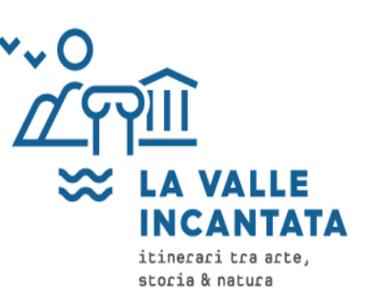HISTORY
The village's origins go back to the 8th century, and its history is tied to that of the Abbey of San Pietro in Valle, in defense of which two castles were built in about 1200. At one time an independent commune, it was later under the seigniory of the Cybo and the Ancaiani families, and was involved in lengthy wars against Montefranco and Spoleto. Ferentillo's vicissitudes followed those of the Abbey, and the abbatial fief tried to make itself independent from both the Duchy of Spoleto and the Lateran Chapter. The territory became a small state in 1484 thanks to Pope Innocent VIII, a Cybo, who named his nephew Franceschetto Cybo as first Lord of Ferentillo. Franceschetto married Maddalena dè Medici and in 1515 his son, Lorenzo Cybo, wed Ricciarda Malaspina, thus uniting Ferentillo with the Principality of Massa Carrara and Piombino. The Cybo dynasty lasted until 1730, when it passed to Duke Nicolò Benedetti and the Montevecchi of Fano. Ferentillo became a Commune with the Unification of Italy.
ART, CULTURE, ENVIRONMENT
Just inside the village, in the Matterella quarter, is the Church of Santa Maria, dominated by its Romanesque bell tower with a spire and paired windows. Originally built in the 13th century, it was enlarged in the 15th with the addition of two aisles, and has frescoes from the Umbrian and Byzantine schools. The Church of Santo Stefano, in the Precetto quarter, was constructed in the 16th century over another church from the 1400s used as a cemetery crypt. In fact, below the Church of Santo Stefano, in the historic center of Precetto, there is the Museum of the Mummies: preserved inside are the bodies of people who lived and died long ago in Ferentillo, first buried in the tombs inside the church itself, and then moved, following the Napoleonic Edict, to this cemetery. An unusual microorganism found in the soil in this area is responsible for the bodies' excellent state of preservation. Nearby is the jewel of Ferentillo: the Abbey of San Pietro in Valle, the most important memorial to the Duchy of Spoleto and one of the most interesting abbeys from the entire medieval period. Inside the abbey are a votive stone, Roman and other architectural and sculptural fragments, and various Roman and medieval sarcophagi. Next to the church is a magnificent two-story cloister dating from the 12th century. The Ferentillo area lies within the Nera River Park, making it an ideal place for sports tourism, with opportunities for many sports activities, especially free-climbing, which makes Ferentillo one of the most popular and important natural gyms in Italy and Europe, thanks also to its renowned Climbing School. The Nera River is excellent not only for sport trout fishing, but also for spectacular canoeing and rafting.
UN VIAGGIO TRA LE SUE BELLEZZE ARTISTICHE E CULTURALI
Il paese è diviso dal fiume Nera in due borghi, Matterella e Precetto dominati da due rocche erette in difesa dell’Abbazia di San Pietro in Valle.
La rocca di Precetto, tipico castello di pendio, ha forma triangolare con al vertice una torre quadrata di vedetta. Mattarella invece presenta il cassero quadrato, con bastioni cilindrici.
Da vedere, a Matterella, la chiesa di Santa Maria, dominata dall’alto campanile a guglia in stile romanico con monofore binate. Costruita nel XIII secolo, fu ampliata nel XV secolo in tre navate e conserva alcuni affreschi di scuola umbra e bizantina.
Nel borgo di Precetto si trova la chiesa di Santo Stefano, innalzata nel XVI secolo sopra un'altra chiesa del '400 ridotta a cripta cimiteriale. Proprio nella cripta romanica della chiesa si trova il Museo delle Mummie, al cui interno sono conservati alcuni corpi mummificati venuti alla luce nel 1805, a seguito di un editto napoleonico che vietò qualsiasi sepoltura all’interno delle mura cittadine e ordinò l’esumazione delle salme custodite nella cripta, alcune delle quali risultarono completamente mummificate.
COSA VEDERE E COSA FARE NEI DINTORNI
Lungo la statale Valnerina che da Ferentillo prosegue in direzione Cascia, all’interno di un fitto bosco, sorge un vero gioiello: l’Abbazia benedettina di San Pietro in Valle, la testimonianza più importante del Ducato di Spoleto e tra i maggiori documenti di arte alto-medioevale dell’Italia centrale. All'interno conserva un cippo votivo, frammenti scultorei e architettonici anche romani, vari sarcofagi romani e medievali. Accanto alla chiesa un magnifico chiostro a due ordini del XII secolo.
Di fronte all’Abbazia, sorge il castello di Umbriano, borgo abbandonato molto suggestivo, immerso nel verde dei boschi. Risaltano l’alta torre quadrata, i bastioni e la porta ogivale. La fortificazione risale all’890 e fu eretta per difendere l’Abbazia dalle invasioni saracene. Vista l'importanza strategica, il castello fu ulteriormente fortificato nel 1400 e nel 1570.
Il territorio, inserito nell’area del Parco Fluviale del Nera, è meta privilegiata degli amanti del turismo sportivo, con le fantastiche e adrenaliniche discese del fiume Nera adatte al rafting e con la falesia più famosa del centro Italia che offre quanto di più emozionante un free climber possa desiderare.



























